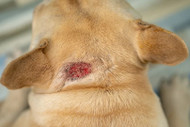Common Skin Conditions in Dogs
Posted by Essential Dog on Mar 16, 2023
Dogs are susceptible to a variety of skin conditions, ranging from mild irritations to severe infections that require urgent medical attention. Skin problems can be caused by a variety of factors, including allergies, parasites, infections, and hormonal imbalances. Here are some common skin conditions that affect dogs:
Flea Allergy Dermatitis (FAD) - FAD is caused by an allergic reaction to flea saliva. Dogs with FAD will experience severe itching, which can lead to hair loss, redness, and open sores. Prevention is key, and regular flea control treatments are essential.
Sarcoptic Mange - Sarcoptic mange is caused by a mite that burrows into the dog's skin, causing intense itching and hair loss. The mites can also infect humans, so it is important to seek veterinary treatment immediately.
Hot Spots - Hot spots are areas of irritated and inflamed skin that can develop quickly, often due to excessive licking, scratching, or biting. They can be treated with natural itch relief products, medicated shampoos and antibiotics, but prevention is best achieved through regular grooming and preventing underlying conditions that cause the dog to itch.
Atopic Dermatitis - Atopic dermatitis is a chronic skin condition which is caused by an allergic reaction to environmental allergens. Symptoms include itching, redness, and recurrent skin infections. Treatment may involve natural remedies, medication, lifestyle changes, and regular bathing.
Bacterial Infections - Bacterial infections can occur due to a variety of factors, including underlying skin conditions, injury, or a weakened immune system. Symptoms may include redness, swelling, and pus-filled bumps. Treatment typically involves antibiotics, and in some cases, surgical intervention may be necessary.
Ringworm - Ringworm is a fungal infection that can cause circular, scaly patches of skin. It is extremely contagious and can be transmitted to humans. Treatment involves antifungal medication and thorough cleaning of the dog's environment.
Seborrhea - Seborrhea is a condition that affects the skin's oil glands, causing scaly patches and excessive oil production. Treatment involves specialised shampoos and regular grooming.
Prevention and early intervention are key in managing dog skin conditions. Regular grooming, proper flea control, and a healthy diet can all help keep the skin healthy and reduce the risk of infection. Owners should also be vigilant for signs of skin irritation, such as excessive scratching or biting, redness, or bumps, and seek veterinary treatment promptly.
Diagnosis and Treatment
It might be challenging to make a prompt diagnosis of a specific skin problem in your dog because the symptoms of dermatitis, parasites, fungal infections, and bacterial infections are often identical. In most cases, your veterinarian will examine your dog's skin and do any appropriate tests. They will ask for any background information you have that may explain the problem. Consider any recent changes to your dog's routine, such as the introduction of a new product, the introduction of a new setting, or the onset of symptoms during a specific time of day.
Depending on the condition, you may be prescribed an oral drug, an injection, a supplement, or a topical ointment or spray.
Conclusion
In conclusion, dog skin conditions can range from mild irritations to severe infections, and prevention and early intervention are key to successful management. Owners should be aware of common skin conditions, such as FAD, sarcoptic mange, hot spots, atopic dermatitis, bacterial infections, ringworm, and seborrhea, and take steps to prevent them. Maintaining a healthy diet, regular grooming, and seeking prompt veterinary attention when necessary can help keep dogs healthy and comfortable.

